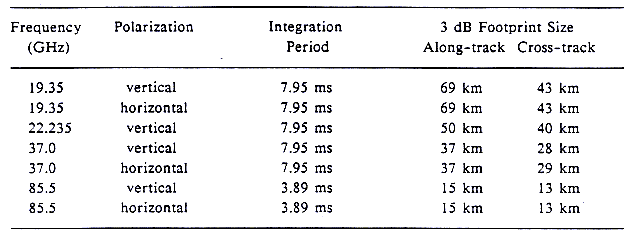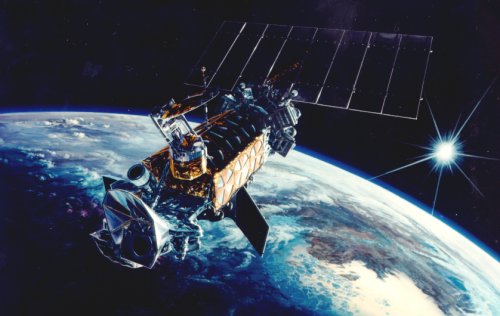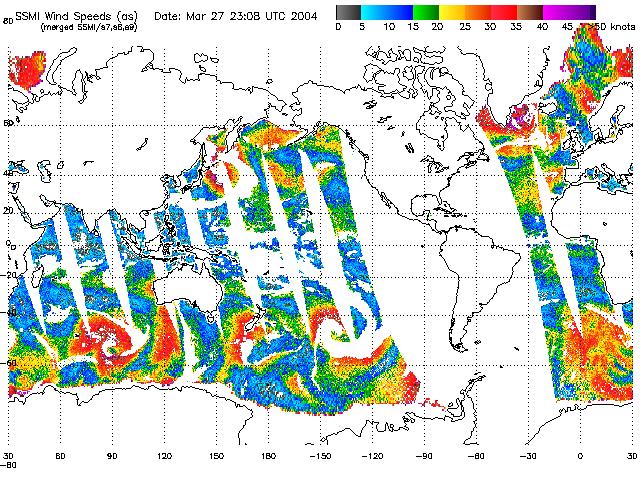| SSM/I Radiometer | |
| Contents
SSM/I Radiometer
|
The Special Sensor Microwave Imager (SSM/I) is a passive microwave radiometer flown aboard Defense Meteorological Satellite Program (DMSP) satellites. The SSM/I is a seven-channel, four-frequency, linearly-polarized, microwave radiometric system which measures atmospheric, ocean and terrain microwave brightness temperatures at 19.35, 22.235, 37.0, and 85.5 GHz. Below is a chart of the sensor characteristics.
The SSM/I fly aboard the DMSP satellites, DMSP F-8, DMSP F-10, DMSP F-11, DMSP F-12, and DMSP F-13. These satellites fly near-circular, sun-synchronous, and near-polar orbits, with an altitude of 860 km and an inclination of 98.8°. The orbital period is 102 minutes. This orbit provides complete coverage of the Earth, except for two small circular sectors 2.4° centered on the North and South poles
Remote Sensing Systems (http://www.ssmi.com/) produce research quality data products from SSM/I data. These data products are produced as part of NASA's Pathfinder Program. Remote Sensing Systems uses a unified, physically based algorithm to simultaneously retrieve ocean wind speed (at 10 meters), water vapor, cloud water, and rain rate.
Resources https://www.fnmoc.navy.mil/PUBLIC/SATELLITE/TUTORIAL/ssmi.html- Special Sensor Microwave Imager (SSM/I) information http://www.peterson.af.mil/hqafspc/Library/FactSheets/FactsSheets.asp?FactChoice=4- Defense Meteorological Satellite Program (DMSP) information Remote Sensing Systems homepage |
|---|---|
|
Web Publications Dr. Young's Homepage Geography Department Salem State College
updated April 28, 2004 |
|


